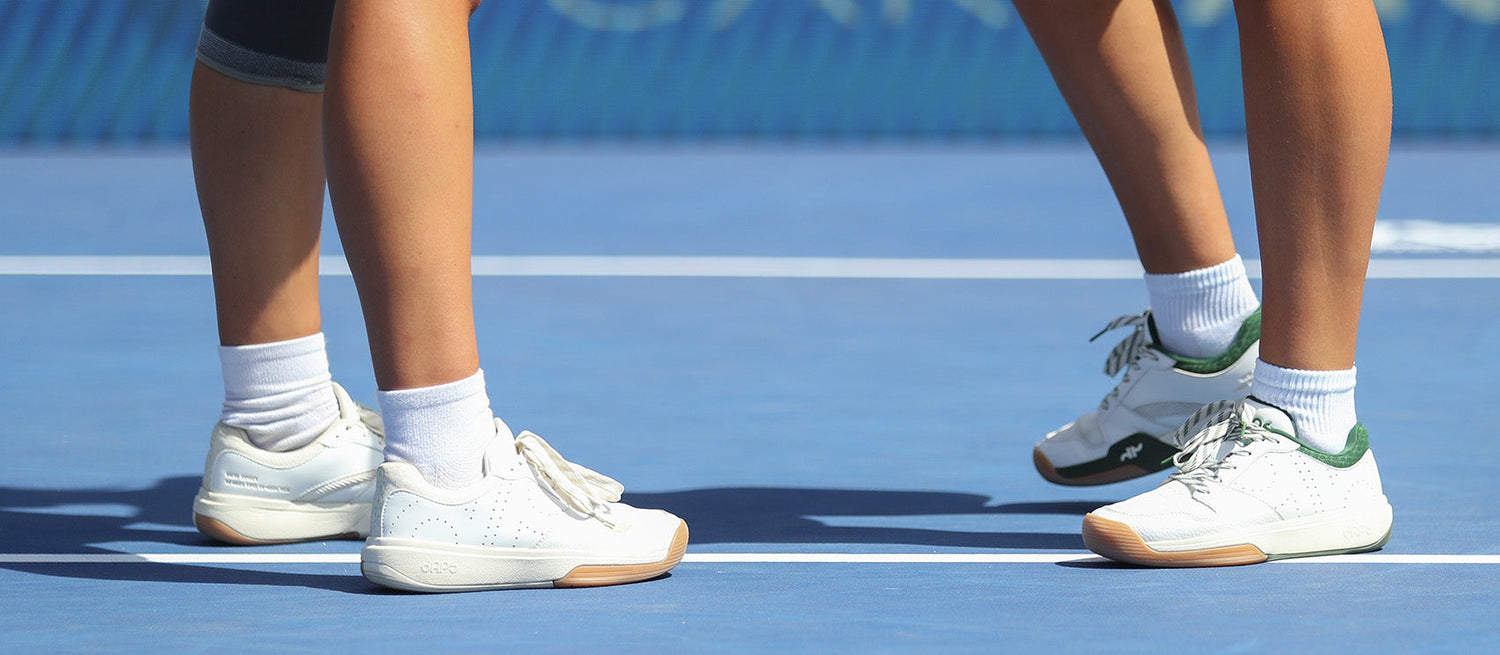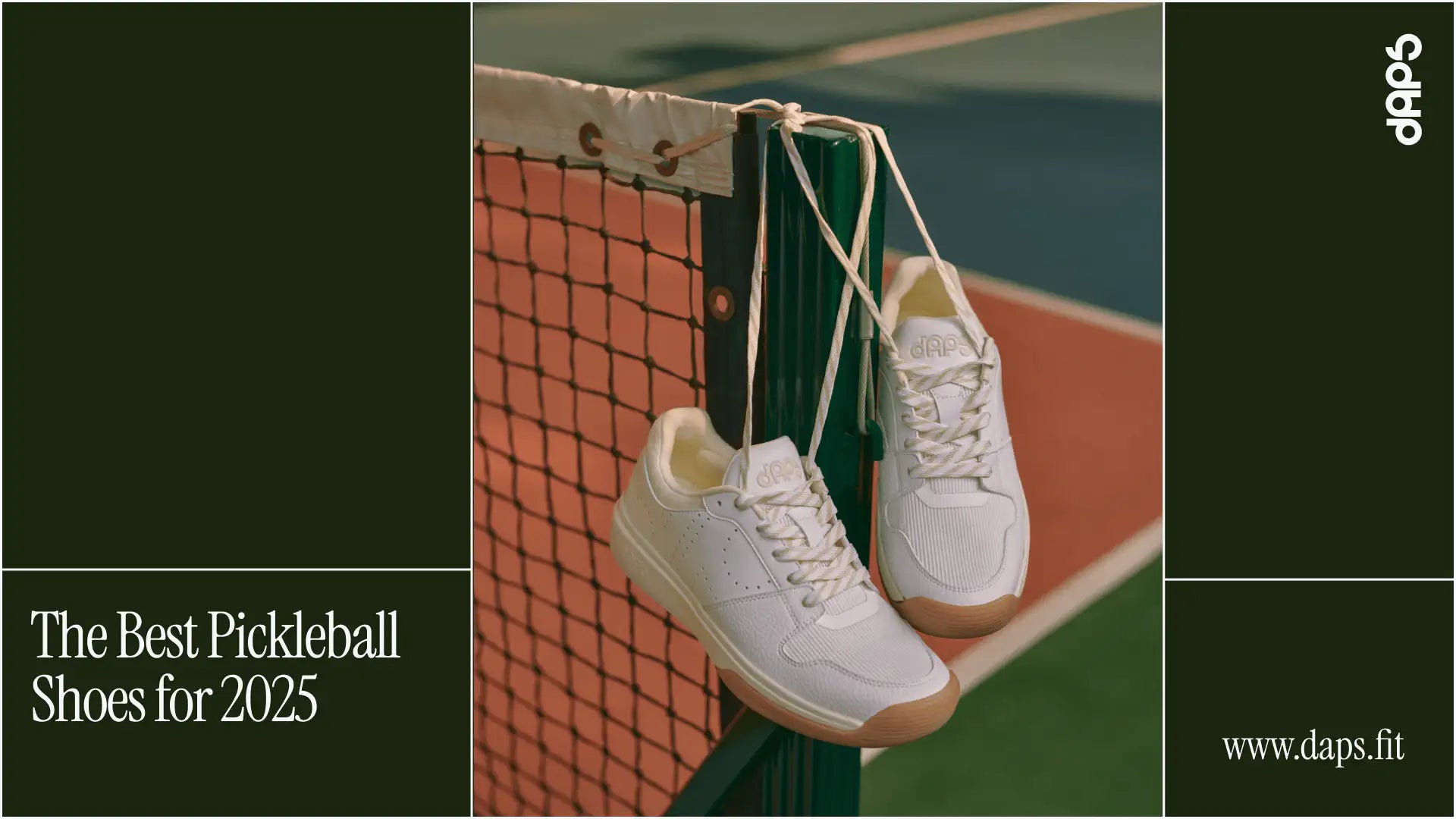Pickleball isn’t just a backyard pastime anymore—it’s the fastest-growing sport in the U.S., attracting players of all ages and competition levels. With more tournaments, leagues, and clubs popping up each year, athletes are realizing that generic sneakers and hand-me-down tennis shoes simply won’t cut it. The sport requires quick reflexes, explosive changes in direction, and hours of time on hard courts. Without the right footwear, players are more prone to fatigue, blisters, joint pain, and even injuries.
That’s where pickleball-specific shoes come in. Unlike tennis or volleyball shoes that have been repurposed for the court, brands are finally designing footwear built for pickleball from the ground up. In this guide, we’ll explore everything you need to know about choosing the best pickleball shoes—fit, performance features, insider buying tips, and even the latest science-backed innovations from brands like DAPS and insole pioneers like Blumaka. Whether you’re a beginner looking to avoid sore feet or a competitive player searching for an edge, this guide will walk you through the essentials.
Why Pickleball Requires Its Own Shoe
Pickleball may look like a mash-up of tennis, badminton, and ping pong, but its movements are unique. Players perform short, explosive sprints, hard lateral cuts, and quick direction changes—sometimes all in one rally. Unlike tennis, pickleball often involves more side-to-side shuffles and sharp pivots in tight spaces, especially at the kitchen line.
The Risk of Wrong Footwear
Using running shoes (built for forward motion) or generic trainers often leads to problems:
-
Rolled ankles due to inadequate lateral support.
-
Plantar fasciitis and arch strain from poor cushioning.
-
Knee and hip pain caused by shoes not engineered for multi-directional court stress.
Court Surfaces
-
Indoor courts (often hardwood or gym floors) demand maximum grip without marking surfaces.
-
Outdoor courts (asphalt or concrete) require tougher outsoles that resist abrasion and provide cushioning against impact.
This is why biomechanical testing has proven that pickleball athletes benefit from sport-specific footwear, rather than repurposed tennis or volleyball models.
The Science of Performance: Heeluxe Testing & the DAPS DESI Pickleball Shoes
When it comes to validating shoe performance, few labs carry the credibility of Heeluxe, a California-based footwear biomechanics company. They test shoes the same way athletes use them—on force plates, motion capture systems, and energy return rigs.
In one of their recent evaluations, Heeluxe broke down the science behind the DAPS DESI, one of the first pickleball shoes engineered specifically for the sport. Here’s what they found:
-
Dynamic Movement: The DESI outperformed leading tennis shoes when measuring explosive lateral movements. This is critical for staying quick at the net.
-
Ground Force Reaction: Players were able to generate more force per stride, meaning faster acceleration and sharper changes of direction.
-
Energy Return: Thanks to its ETPU midsole and integrated Blumaka insoles, the shoe returned more energy with each step—delaying fatigue during long matches.
Heeluxe’s conclusion was clear: shoes designed for pickleball give players a measurable competitive advantage over those using adapted footwear. In other words, the right shoe doesn’t just protect you—it helps you play better.
The Blumaka Factor: Insoles That Quietly Change the Game
If the midsole is the engine of a shoe, the insole is its suspension system. And no company is innovating in this space quite like Blumaka.
Blumaka has earned attention in the sports world for its eco-friendly performance insoles, which are made from recycled foam while still outperforming traditional stock insoles. According to their research:
-
Blumaka insoles last up to 5x longer than standard insoles.
-
They provide consistent cushioning and shock absorption, helping reduce joint strain.
-
The unique foam construction improves energy efficiency, keeping players fresher through long rallies.
For pickleball, this means fewer sore knees, better impact absorption on hard courts, and a lighter environmental footprint.
DAPS partnered with Blumaka to integrate these insoles directly into the DESI lineup, giving players both sustainability and performance in one package. It’s a quiet revolution—where the small details inside the shoe make a huge difference on the court.
What Players Really Look For in Pickleball Shoes (Insights from The Kitchen Pickle)
Gear reviewers like The Kitchen Pickle provide valuable player-driven perspectives on what makes a shoe rank among the best. Their review of the best pickleball shoes for men highlights several key buying factors that players consistently mention:
-
Traction: Shoes must grip well enough to stop on a dime, but not so sticky that they hinder quick pivots.
-
Stability: Lateral support is non-negotiable, especially for aggressive players who live at the kitchen line.
-
Breathability: Lightweight mesh uppers that allow airflow help prevent overheating during long sessions.
-
Comfort: Enough cushioning to protect joints, but not so much that the shoe feels “mushy.”
-
Durability: Hard court play eats up outsoles fast—shoes that last longer earn high marks.
While many players rely on tennis brands like ASICS or K-Swiss, The Kitchen Pickle notes that pickleball-specific shoes like the DAPS DESI are carving out a new category. By combining biomechanical validation with real-world comfort, DAPS offers something traditional crossovers can’t: a shoe designed exclusively for the way pickleball is played.
Fit Matters: Choosing the Right Size
Even the best-engineered shoe will fail you if it doesn’t fit properly. Here’s what to consider:
-
Length: You want about a thumb’s width of space between your longest toe and the end of the shoe. Too much space = sliding; too little = bruised toenails.
-
Width: Many players struggle with narrow shoes. Brands like DAPS account for wider toe boxes, which help reduce blister risk.
-
Arch Support: If you have flat feet or high arches, insoles like Blumaka’s can help customize support.
-
Heel Lockdown: A snug heel counter prevents slippage, which is critical for explosive cuts.
Pro Tip: Always try shoes on with the socks you plan to wear on the court. Your feet swell during play, so shop later in the day for the most accurate fit.
Indoor vs. Outdoor Pickleball Shoes
Not all pickleball courts are created equal. Choosing the right shoe often depends on where you play most.
-
Indoor Shoes: Typically have gum-rubber soles for maximum grip. Lightweight uppers prioritize speed and ventilation.
-
Outdoor Shoes: Feature tougher outsoles for abrasive surfaces and more cushioning for impact protection.
-
Hybrid Strategy: Serious players often own two pairs—one optimized for each surface—to maximize performance and shoe lifespan.
Buying Tips: What to Look For
When shopping for pickleball shoes, focus on these core areas:
-
Cushioning vs. Responsiveness: Cushioned shoes protect joints, while responsive shoes deliver more speed. Choose based on play style.
-
Durability vs. Weight: Lighter shoes help with quickness but may wear out faster. A balanced model like the DESI gives both.
-
Price vs. Value: A $150 shoe that lasts longer and reduces risk of injury which makes it a smarter buy than a $70 sneaker that falls apart quickly.
-
Retail Sources: Specialty sites (like DAPS’ official site) often provide better sizing guides and warranties than generic online retailers.
Care & Longevity: Making Shoes Last
Even the best shoes need maintenance. To extend their life:
-
Rotate between two pairs if you play 3+ times a week.
-
Clean outsoles to restore traction.
-
Remove insoles after play to let them dry, preventing odor and breakdown.
-
Replace shoes after 60–90 hours of intense play or when the outsole grip is visibly worn.
Final Thoughts: The Shoe Is Your Foundation
In pickleball, your paddle might get all the attention, but your shoes carry you every single point. Investing in a pair built specifically for the sport pays off in performance, comfort, and injury prevention.
Biomechanics labs like Heeluxe have proven that pickleball-specific shoes such as the DAPS DESI deliver measurable advantages. Innovative insole technology from Blumaka adds another layer of durability and comfort. And real-world reviewers like The Kitchen Pickle echo what players feel on the court: the right shoe is the ultimate difference-maker.
If you’re serious about your game—or just want to play longer without aches—your next step is clear.
👉 Explore the pickleball shoes for men and pickleball shoes for women collections to find your perfect fit.


Leave a comment
This site is protected by hCaptcha and the hCaptcha Privacy Policy and Terms of Service apply.